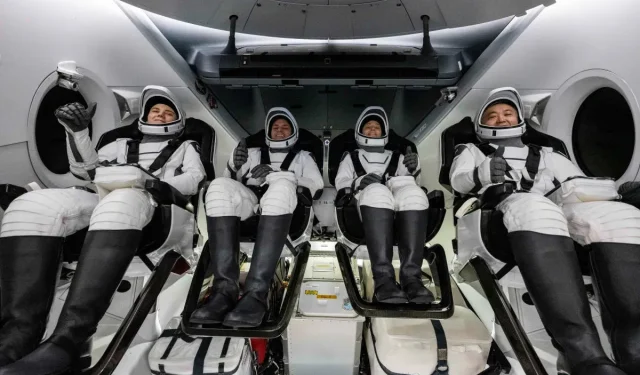The SpaceX Crew-5 mission has returned to Earth, in many ways a historic mission.
The SpaceX Crew-5 mission has returned to Earth. A few hours ago, the Dragon ship Endurance touched down off the coast of Florida after a five-month stay aboard the International Space Station. NASA astronauts Josh Kassada and Nicole Mann, Japanese Koichi Wakata and Russian cosmonaut Anna Kikina were in the capsule.
SpaceX Crew-5 mission returns to Earth
Four spent 157 days in orbit during the ISS’s historic spin. As part of the Crew-5 mission, Wailaki tribe member Nicole Mann became the first Native American woman to spend time in space, Space.com reports. It was also the first time a Russian cosmonaut has traveled aboard a private American spacecraft, which came about after NASA and Roscosmos signed a seat-sharing agreement last year amid tensions between the United States and Russia over the war in Ukraine.
For Koichi Wakata, this flight marked his fifth return to Earth, a record for Japan. The mission also marked the second Endurance orbital flight; the capsule did successfully bring the Crew-3 crew back to Earth last fall. The craft will now return to SpaceX’s Dragon Lair facility in Florida for safety checks and repairs ahead of its next flight.
Historic mission in many ways
Missing on this flight, NASA astronaut Frank Rubio arrived at the ISS on MS-22, a Russian Soyuz spacecraft that leaked coolant late last year after colliding with a micro-asteroid. The Endurance team had to temporarily convert their vehicle to carry Frank Rubio in case of an emergency evacuation from the ISS after Roscosmos announced that the MS-22 could only safely carry two people. These modifications were later removed after a replacement Soyuz spacecraft was sent to return Frank Rubio and cosmonauts Sergei Prokopiev and Dmitry Petelin to Earth.
Splashdown! #Crew5 has returned to Earth, having completed a nearly six-month science mission at @Space_Station. Their @SpaceX Dragon Endurance spacecraft landed at 9:02 pm ET (02:02 UTC, March 12) near Tampa off the coast of Florida. pic.twitter.com/nLMC0hbKY4
— NASA (@NASA) March 12, 2023


